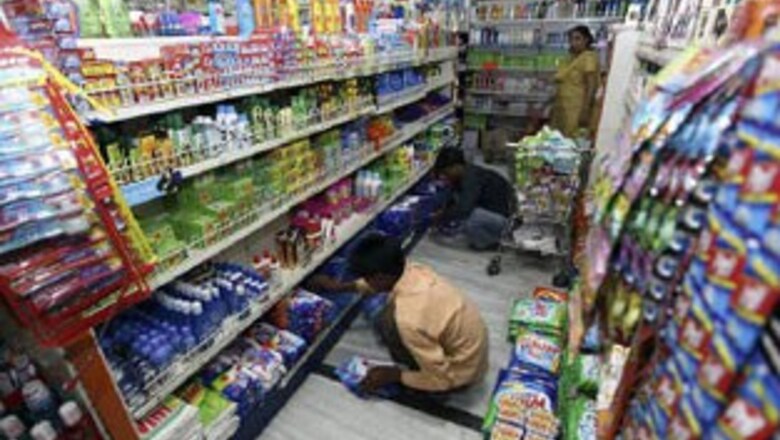
views
New Delhi: India ramped up spending for this fiscal year to support a fragile economic recovery, spooking stock and bond markets with plans for record borrowing and the biggest budget deficit in 16 years.
Investors had hoped the new government would use a strong re-election mandate to push through pro-market reforms, but the budget it unveiled lacked major policy changes and focused on increased borrowing and spending to aid farmers and the poor.
Stocks tumbled nearly 6 per cent, bond yields spiked and the rupee fell 1.4 per cent after Finance Minister Pranab Mukherjee, sticking to the ruling Congress party's theme of "inclusive growth", said the fiscal deficit for the year ending March 2010 would increase to 6.8 per cent of gross domestic product (GDP).
The stocks selldown was the biggest in six months.
With the developed world mired in recession, big emerging economies led by China, on track for 8 per cent growth this year, and India are expected to help drive worldwide recovery. Both economies have been fuelled by stimulus spending to spur domestic demand.
Investors had expected India's fiscal deficit to grow to up to 6.5 per cent, from 6.2 per cent in the previous year. However, analysts said the hefty borrowing plan threatens to drive up the cost of credit and choke off economic growth.
The first budget of Prime Minister Manmohan Singh's new administration was seen as a roadmap for how he will govern for the next five years after his Congress party-led coalition was re-elected by an unexpectedly decisive margin in May.
"While the thrust on agriculture, infrastructure, etc., augurs well from a long-term growth perspective, the fiscal profligacy is quite obvious in the near term," said Rupa Rege Nitsure, chief economist at Bank of Baroda in Mumbai.
Budget documents showed the government's gross market borrowing in the current fiscal year would total a record 4.51 trillion rupees ($93.4 billion), 14 per cent higher than a Reuters poll forecast and about a quarter higher than the borrowing target cited in an interim budget in February.
Mukherjee said overall spending would increase by 36 per cent this year, but also called for a return to fiscal responsibility targets "at the earliest." His budget report said the fiscal deficit target would be closer to 3 per cent of GDP in the year that ends in March 2012, assuming a global economic recovery.
Reform hopes disappointed
Market watchers expressed concern that Mukherjee did not unveil significant reforms, provide details on plans to sell stakes in state-controlled companies or relax foreign investment limits.
"It is really a big disappointment," said Madhavi Vora, managing director, ULJK Securities.
Mukherjee said states should remove bottlenecks for infrastructure projects, and outlined plans for more flexible financing for infrastructure and development of long-distance gas pipelines. Inadequate power supplies and transport links have long choked India's growth.
Unconstrained by its previous alliance with leftist parties, Singh's new government had a freer hand to implement economic liberalisation measures to drive growth, but instead focused its budget on rural development and support of social programmes.
Despite its recent vibrant growth, grinding poverty persists in India. A 2007 government study said 77 per cent of Indians, or 836 million people, lived on less than 50 cents a day.
India's fiscal deficit ballooned to 6.2 per cent in the financial year that ended in March. Including off-balance sheet items like subsidies for fuel and food, as well as state-level shortfalls, the overall deficit was about 10 per cent of GDP.
That compares with below 3 per cent of GDP for China and more than 12 per cent for the United States in the latest fiscal years.
Despite the expanded deficit projection, Standard & Poor's analyst Takahari Ogawa said India's sovereign credit rating faces no significant pressure. S&P put India's BBB-minus rating on a negative outlook in February, citing an unsustainable deterioration in the country's fiscal position.
India's economy, Asia's third largest, grew 6.7 per cent in the most recent fiscal year after expanding at least 9 per cent for three straight years.
The finance ministry said on Thursday that growth could rise to 7 per cent this year, towards the high end of the range of private forecasts, and subsequently increase to 8.5 to 9 per cent if the government adopted sweeping reforms and accelerated infrastructure development.


















Comments
0 comment